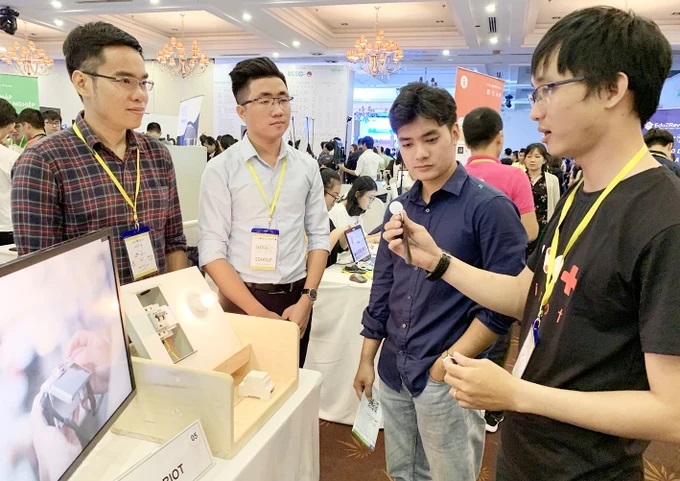
The recently announced Provincial Innovation Index (PII) by
the Science-Technology Ministry precisely reflects the socio-economic
development models of 63 provinces and cities in Vietnam in 2023.
Deputy Minister of Science and Technology Hoang Minh informed that in 2022, the PII had been piloted in 20 localities before it was upgraded in 2023 to suit all provinces and cities in the country. This index closely matches the Global Innovation Index (GII), introduced by the World Intellectual Property Organization (WIPO) and used by the Government since 2017.
The PII has 52 sections to correctly reflect the comprehensive picture of the socio-economic development models based on science-technology and innovation of each locality. This becomes a great tool for each province and city to identify its own strengths, weaknesses, opportunities, and threats to boost its growth.
Since December 2023, independent international experts recommended by WIPO have conducted evaluations on the calculation methods, data, techniques, and models of the PII 2023. The results show that the PII satisfies global standards on statistics and methodology, plus clear calculation steps based on the best practices applied by the European Commission, the UN, and other international organizations.
According to the PII 2023, the top-10 localities in Vietnam (from highest to lowest) are Hanoi (62.86 points), HCMC (55.85 points), Hai Phong City (52.32 points), Da Nang City (50.70 points), Can Tho City (49.66 points), Bac Ninh Province (49.2 points), Ba Ria – Vung Tau Province (49.18 points), Binh Duong Province (48.64 points), Quang Ninh Province (48.03 points), and Thai Nguyen Province (47.75 points).
In contrast, the lowest positions belong to Cao Bang Province (22.18 points), Lai Chau Province (22.78 points), Gia Lai Province (25.83 points), and Ha Giang Province (26.14 points).
Hanoi is able to lead the nation regarding both input and output innovation thanks to its first positions in 14/52 categories, especially as to investments in human resources, research and development, quantity of scientific-technological organizations.
Staying at the second ranking is HCMC with outstanding scores in 12/52 categories due to its supporting policies for small and medium-sized enterprises, its digital infrastructure, its intellectual property products, and its businesses with innovative activities.
The results have so far illustrated precisely the current socio-economic status of all localities, with the leading group owning many advantageous natural conditions as well as developed industry and service sectors, modern infrastructure, bustling scientific-technological activities.
Meanwhile, those in the bottom group have a lot of limits in socio-economic growth owing to their disadvantageous natural conditions for the development of science-technology and innovation (the Central Highlands and the Northern midlands and mountainous areas).
Minister of Science and Technology Huynh Thanh Dat commented that the PII should become a quantitative tool to correctly describe socio-economic growth models based on science-technology and innovation. The PII 2023 report is a useful document and a scientific basis for the local authorities to prepare or adopt suitable development policies and for businesses to consider investment environments, resources for manufacturing and trading activities.

 Previous page
Previous page Back to top
Back to top







